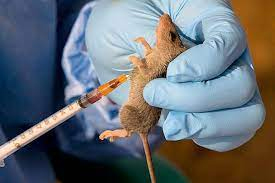Lassa Fever ravaging again, as death toll hits 92
New casualties recorded in Bauchi, Ebonyi
The death toll for Lassa Fever in Nigeria from January 2021 has jumped to 92, with Bauchi and Ebonyi States recording new deaths.
The Nigeria Centre for Disease Control, NCDC, disclosed yesterday in its latest situation report on the outbreak of the disease in the country.
According to the NCDC, week 50, which covered December 13 to 19, revealed that three more deaths were reported in the week under review.
While Bauchi reported two new fatalities, Ebonyi recorded one new death from the disease.
“Cumulatively from Week 1 to Week 50, 2021, 92 deaths have been reported with a Case Fatality Rate (CFR) of 20.3 per cent, which is lower than the CFR for the same period in 2020 (20.7 per cent),” it stated.
Lassa fever is an acute viral illness and a viral haemorrhagic fever first reported in the Lassa community in Borno when two missionary nurses died from an unusual febrile illness.
Since then, Nigeria has continued to report cases and outbreaks and the disease is increasingly recognised to be endemic in many parts of West Africa such as Benin Republic, Ghana, Mali and the Mano River region (Sierra Leone, Liberia and Guinea).
The agency noted that a total of 190 new cases were suspected in 11 states and the Federal Capital Territory (FCT), but just 10 cases were confirmed in four states.
Amongst others were; Edo – two, Ondo – four, Bauchi – three, and Ebonyi – one, and two of them are healthcare workers.
The number of new confirmed cases, the agency stated, is the same as the figure reported in the previous week.
“In total for 2021, 17 states have recorded at least one confirmed case across 66 Local Government Areas,” it said.
“Of all confirmed cases, Edo has (43 per cent), Ondo (35 per cent), and Taraba (five per cent).
“The predominant age group affected is between 21 and 30 years (range: 1 to 70 years, Median Age: 29 years). The male to female ratio for confirmed cases is 1:0.9. The number of suspected cases has decreased compared to that reported for the same period in 2020,” it added.
It will be recalled that Lassa virus is transmitted to man by infected multi-mammate rats and humans become infected from direct contact with the urine and faeces of the rat carrying the virus.
People also contract the disease by touching soiled objects, eating contaminated food, or exposure to open cuts or sores.
Secondary transmission from person to person can also occur as a result of exposure to the virus in the blood, tissue, urine, faeces or other bodily secretions of an infected patient.
Culled from Vanguard





Comments
Post a Comment